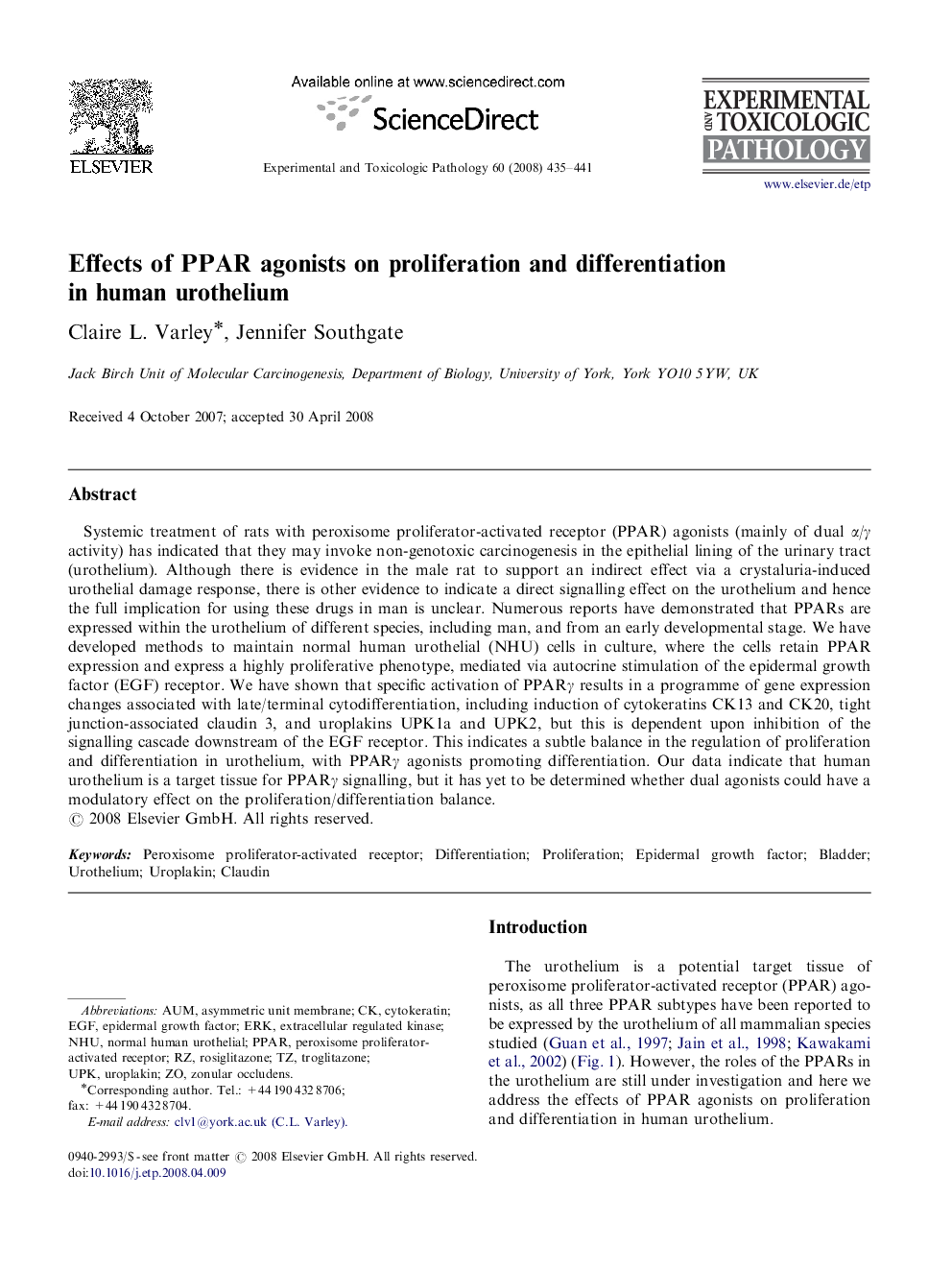| Article ID | Journal | Published Year | Pages | File Type |
|---|---|---|---|---|
| 2499813 | Experimental and Toxicologic Pathology | 2008 | 7 Pages |
Systemic treatment of rats with peroxisome proliferator-activated receptor (PPAR) agonists (mainly of dual α/γ activity) has indicated that they may invoke non-genotoxic carcinogenesis in the epithelial lining of the urinary tract (urothelium). Although there is evidence in the male rat to support an indirect effect via a crystaluria-induced urothelial damage response, there is other evidence to indicate a direct signalling effect on the urothelium and hence the full implication for using these drugs in man is unclear. Numerous reports have demonstrated that PPARs are expressed within the urothelium of different species, including man, and from an early developmental stage. We have developed methods to maintain normal human urothelial (NHU) cells in culture, where the cells retain PPAR expression and express a highly proliferative phenotype, mediated via autocrine stimulation of the epidermal growth factor (EGF) receptor. We have shown that specific activation of PPARγ results in a programme of gene expression changes associated with late/terminal cytodifferentiation, including induction of cytokeratins CK13 and CK20, tight junction-associated claudin 3, and uroplakins UPK1a and UPK2, but this is dependent upon inhibition of the signalling cascade downstream of the EGF receptor. This indicates a subtle balance in the regulation of proliferation and differentiation in urothelium, with PPARγ agonists promoting differentiation. Our data indicate that human urothelium is a target tissue for PPARγ signalling, but it has yet to be determined whether dual agonists could have a modulatory effect on the proliferation/differentiation balance.
